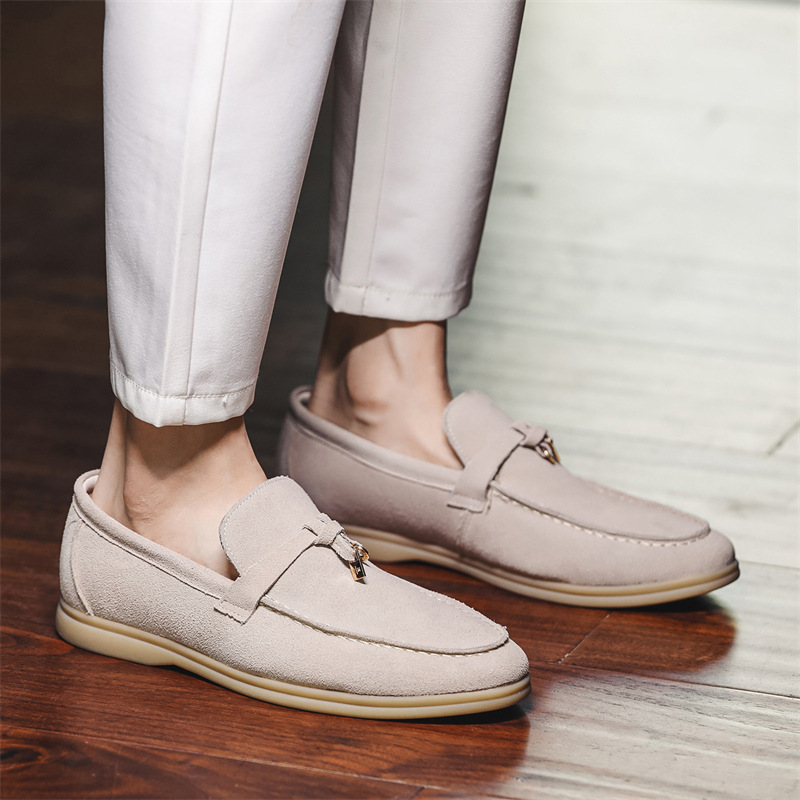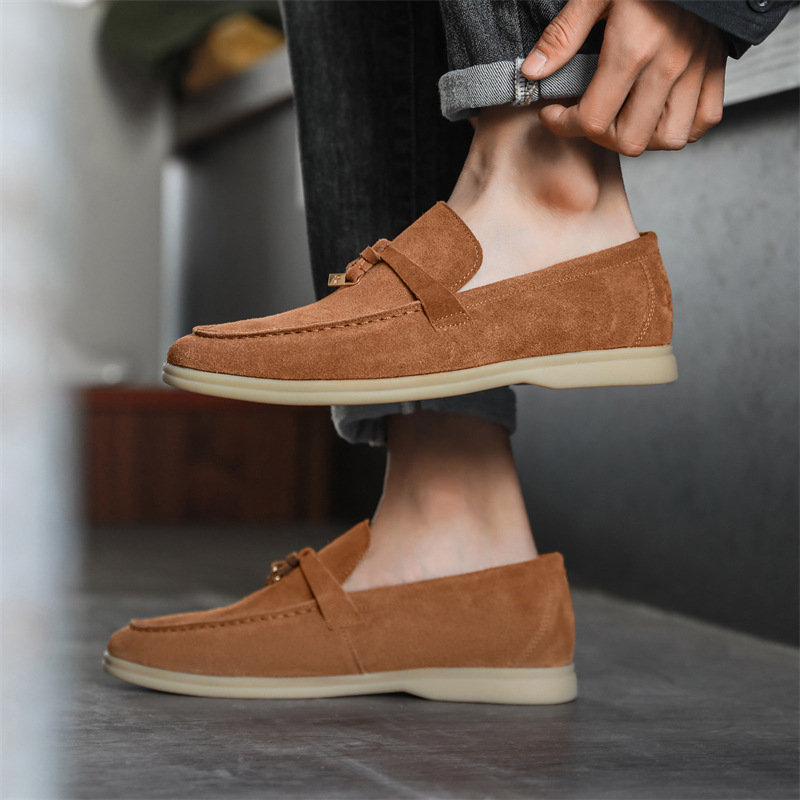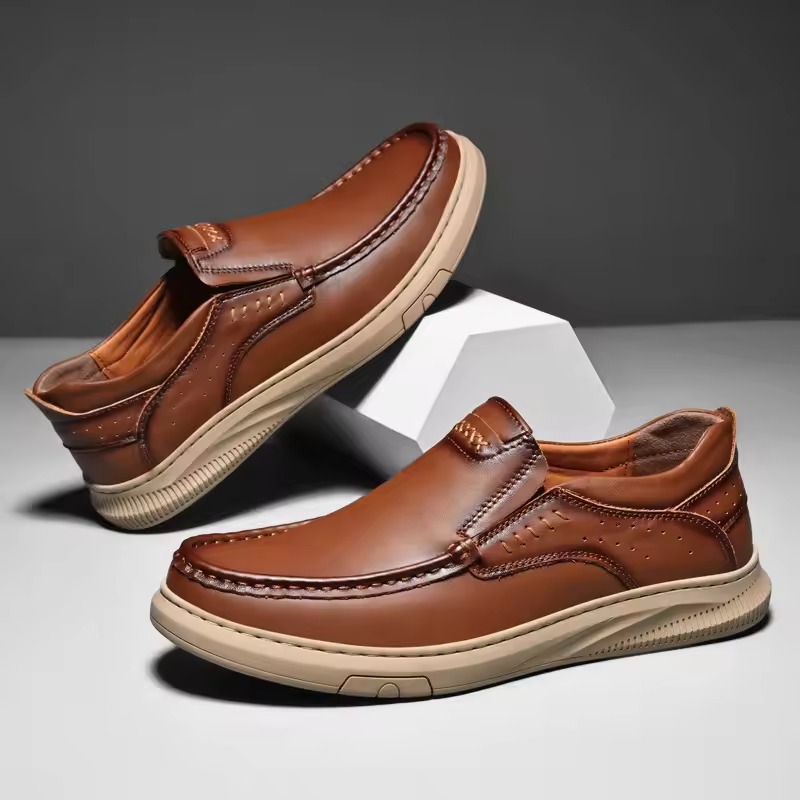Causes of Leather Cracks in Shoes
Leather shoes may develop cracks over time. This is often due to natural wear and tear. As leather ages, it loses moisture. This can result in the leather becoming dry and less flexible. When the leather bends or stretches, cracks can occur, especially at stress points. Stress points are areas where the shoe bends with each step, like across the toes. So, how to fix cracked leather shoes?

Several factors contribute to cracked leather in shoes:
- Dryness: Without proper moisture, leather loses its natural oils. This makes the material brittle.
- Heat: Exposure to high temperatures can cause leather to dry out faster.
- Sunlight: UV rays can break down the leather fibers over time.
- Wear and Tear: Frequent use without rest periods can increase the risk of cracks.
- Lack of Maintenance: Not cleaning or conditioning shoes regularly contributes to cracks.
Preventing cracks is easier than fixing them. Always rotate your shoes to give them time to rest. Store them away from direct heat and sunlight. Use shoe trees to maintain shape. Clean and condition them regularly. These steps help keep the leather supple and crack-free. Remember to care for your shoes as they care for your feet.
Early Signs and Prevention of Leather Cracking
Catching early signs of leather cracking can save your shoes. Look for stiffness or changes in texture. Tiny lines may also appear on the leather surface. These are early warning signs. To prevent cracks, follow some simple tips. First, keep your shoes away from heat and sunlight. These elements can dry out the leather.
Use shoe trees to keep the shape of your shoes. They also help to reduce creasing. Moisturize your shoes with conditioners regularly. This acts like skin lotion, keeping the leather soft. Do not wear the same pair every day; rotate them. This gives leather time to rest and retain its shape. Always clean your shoes before conditioning. This ensures the best absorption of the moisturizer. Consider using specialized leather products. They are designed to maintain the correct moisture balance. Treat any signs of damage early. It can stop cracks from getting worse. With these steps, your leather shoes can stay crack-free longer.
Cleaning: Initial Step Before Repair
Before fixing cracks in leather shoes, cleaning is essential. Start by removing dirt and debris. Use a soft brush or cloth for this. Next, pick a leather cleaner suitable for your shoes. Always test the cleaner on a small, hidden area first, to prevent damage. Wipe the shoes gently with a damp cloth, then apply the cleaner as per instructions. Let the shoes dry naturally; avoid direct sunlight or heat sources. Once dry, inspect the leather for any remaining dirt before proceeding to repair. Clean leather allows conditioners and fillers to adhere better, making the repair more durable. Remember that clean leather is the best base for a successful fix. Keep sentences short and simple, and avoid passive voice for clarity.
Conditioners and Creams: Hydrating Your Shoes
To keep your leather shoes from cracking, hydration is key. Conditioners and creams can reintroduce those vital oils and waxes the leather needs, ensuring flexibility and preventing those unsightly cracks. Just as our skin requires moisturizing to stay soft and resilient, so does leather to maintain its health. Here’s how to hydrate your leather shoes properly:
Choose the Right Product
Not all leather conditioners are the same. Look for high-quality creams that contain natural ingredients. These tend to penetrate the leather deeply and replenish its natural moisture balance.
Clean Before Conditioning
Always clean your shoes first. This removes dirt that could block the conditioner from absorbing into the leather.
Apply Conditioners Evenly
Use a soft cloth to apply the conditioner. Rub it in using circular motions, making sure to cover the entire shoe evenly.
Let the Conditioner Soak In
After applying, leave your shoes to absorb the conditioner. This could take a few hours, so be patient for the best results.

Buff to a Shine
Once the leather dries, buff it with a clean cloth. This will bring out the natural shine of your leather shoes.
Regular use of conditioners and creams can greatly extend the life of your leather shoes. Not only do they repair minor imperfections, but they also serve as an essential preventative measure against future cracks.
Repairing Light Surface Cracks
When you notice light surface cracks in your leather shoes, don’t worry. With the right care, these can often be fixed quite easily. Follow these simple steps for effective light crack repair:
Identify Light Surface Cracks
Firstly, examine your shoes carefully. Identify where light cracks are visible. These should be shallow and not too wide.
Clean the Affected Area
Before repairing, clean the area around the cracks. Use a soft brush and suitable leather cleaner.
Apply Leather Conditioner
Once clean, apply a high-quality leather conditioner. Leather conditioner helps hydrate the leather and makes light cracks less noticeable.
Smooth Out the Cracks
Rub the conditioner in gently, targeting the cracks. Do this using circular motions to ensure even coverage.
Let the Leather Absorb the Conditioner
After application, leave the shoes to soak in the conditioner. It may take a few hours but is essential for the best results.
Repeat if Necessary
Repeat the process if cracks are still visible after the leather dries. Often just one additional round of conditioning is all that is needed.
Buff the Shoes
Once completely dry, buff the shoes with a clean cloth. This will restore the shoes’ natural luster.
By carefully cleaning, conditioning, and buffing your leather shoes, you can repair light surface cracks. Regular care like this can also prevent new cracks from forming. This routine treatment maintains the elegance and extends the life of your leather shoes.
Dealing with Deep Cracks in Leather Shoes
Dealing with deep cracks in leather shoes requires more intensive care than lighter cracks. Although more challenging, these cracks can still be repaired to restore your shoes to a presentable condition. It’s essential to have the right tools and products on hand to achieve the best results. Here’s a step-by-step guide to managing deep cracks.
Assess the Damage
First, examine the shoe carefully to understand the extent of the damage. This will help determine the repair method needed.
Clean Thoroughly
Before any repairs, clean the shoe with a suitable leather cleaner. Ensure all debris and dirt are removed for the filler to adhere well.
Use Leather Filler
Select a quality leather filler that matches your shoe’s color. Apply it into the cracks, smoothing it out evenly with a small spatula or palette knife.
Allow Time to Dry
Leave the filler to dry as per the product’s instructions. This may take several hours or overnight.
Sand Down the Surface
Once dry, gently sand the filled area to create a smooth, level surface with the rest of the shoe.
Apply Conditioner or Cream
After sanding, apply a leather conditioner or cream to rehydrate the entire shoe and blend the repaired area.
Repeat if Necessary
If cracks are still visible, you may need to repeat the filler and sanding process. Take your time for a seamless finish.
Final Buff and Shine
After the final application of conditioner, buff your shoes to restore their shine and elegance.
Dealing with deep cracks takes patience. But with the right approach, you can successfully bring your leather shoes back to life. Regular care and maintenance following the repair will help prevent future cracks and ensure your shoes look great for years to come.
Techniques for Applying Leather Fillers
When deeper cracks appear in your leather shoes, a leather filler can help restore them. Here’s a simple guide on how to apply leather fillers effectively:
Clean the Area
Start by cleaning the cracked area with a good leather cleaner. This prepares the surface for filler application.
Choose the Right Filler
Pick a leather filler that closely matches your shoes’ color for a seamless repair.
Fill the Cracks
Use a spatula or palette knife to work filler into the cracks carefully. Ensure the filler is smooth and even.
Let it Dry
Allow the filler to dry completely. Follow the instructions on the product for drying times.
Sand the Filled Area
After the filler dries, gently sand it to level with the surrounding leather.
Clean Again
Wipe away any dust from sanding. Use a damp cloth to clean the area before proceeding.
Apply Conditioner
Condition the entire shoe after filling repairs. This blends the repair and hydrates the leather.

Repeat if Needed
If cracks still show, apply more filler and repeat the process.
Buff to Finish
Once fully dry and smooth, buff your shoes to restore shine.
Applying leather fillers takes precision and patience. But with this technique, deep cracks in leather shoes can look much better. Regular conditioning after repair will keep your shoes in top condition.
Color Matching and Dye Application for Leather Shoes
Repairing deep cracks may leave your shoes looking patched without the correct color match. To ensure a uniform appearance, careful dye application is crucial. Here is a straightforward guide to color matching and applying dye to your leather shoes.
Selecting the Right Color Dye
Start by choosing a dye that matches your shoe color. Test the dye on a small, inconspicuous area first. You want to make sure it blends well with the original color.
Preparing the Leather for Dyeing
Before dyeing, ensure the shoe is clean and free from dust from sanding. The dye will adhere better to a clean surface.
Applying the Dye
Use a sponge or wool dauber to apply the dye evenly. Take care to cover all repaired areas completely. Avoid using too much dye at once; light layers work best.
Allowing the Dye to Dry
After applying each layer, give the dye time to dry. This could take a few hours. Patience is key to avoid smudges or uneven tones.
Assessing the Color Match
Once dry, check if the dye matches the rest of the shoe. Apply additional layers if needed to achieve the correct shade.
Finishing with a Sealant
To protect the dye job, apply a leather sealant. This adds a layer of protection and ensures the longevity of the repair.
Correct color matching and dye application give your shoes a refreshed, cohesive look. This process, along with regular shoe maintenance practices, will keep your leather shoes looking their best long-term.
Sealing and Protecting Repaired Leather
After you repair your leather shoes’ cracks, it’s crucial to seal and protect them. This extends the repair life and keeps your shoes looking good. Follow these steps:
Choose the Right Sealant
Find a sealant that suits your leather shoes. Test it on a small area to ensure it doesn’t alter the shoe’s color or texture.
Apply the Sealant
Use a clean sponge or cloth to apply the sealant. Cover the repaired areas thoroughly. This creates a protective barrier over the repair.
Let the Sealant Dry
Give the sealant time to dry fully. Check the product’s instructions for the drying time. Do not rush this step.
Check the Finish
Once dry, examine the repair. The sealant should be clear and not change the shoe’s look.
Regular Reapplication
Reapply sealant periodically. This maintains your leather shoes’ protection over time.
Avoid Heat and Sunlight
Keep the sealed shoes away from heat and sunlight. These can break down the sealant and damage the leather.
By sealing and protecting your repaired leather shoes, you maintain their appearance and durability. Remember to treat your shoes with care and reapply sealant as necessary.
Maintaining Your Leather Shoes to Prevent Future Cracks
Proper maintenance can prevent cracks in leather shoes. Here’s how to keep them in top shape:
Develop a Care Routine
Create a regular care routine for your leather shoes. Clean and condition them often to maintain their moisture.
Use Quality Products
Invest in good quality leather care products. Cheap products might harm the leather in the long run.
Protect from the Elements
Keep your shoes away from harsh elements. Avoid intense heat or direct sunlight, which can dry out leather.
Store Properly
Store your shoes in a cool, dry place. Use shoe trees to maintain their shape and prevent creases.
Handle with Care
Be gentle with your leather shoes. Rough handling can increase the risk of cracks forming.
Regular Inspections
Check your shoes for early signs of damage. Treat any issues promptly to prevent cracks from worsening.
Allow Shoes to Rest
Don’t wear the same pair every day. Rotating between different shoes allows leather to rest and recover.
By following these simple steps, you can keep your leather shoes looking great and crack-free. Regular care saves time and money on future repairs.